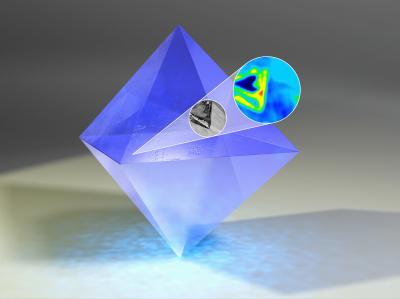A study conducted by Element Six, a specialist in synthetic diamond supermaterials, along with scientists from the Departments of Chemistry and Physics at the University of Warwick, has revealed that boron-doped synthetic diamond materials can be suitable for a new generation of electrochemical applications.
 The research shows that boron-doped synthetic diamond has outstanding electrochemical properties while retaining the full strength and durability of its chemical structure.
The research shows that boron-doped synthetic diamond has outstanding electrochemical properties while retaining the full strength and durability of its chemical structure.
The study shows that the materials have excellent electrochemical properties and retain the durability and strength of their chemical structure.
According to the research findings, the quantity of boron doping in the synthetic diamond together with a decrease in graphitic content, makes the material an ideal choice for the analysis of electrochemical reactions in a broad measurement range.
Element Six developed the high quality synthetic diamond samples that were used in the research by using chemical vapour deposition (CVD), and optimized them mainly for electrochemical applications. The collaborative research discovered that it was possible to dope the synthetic diamond material with considerably high levels of boron to allow metal electrode-like behavior, and simultaneously restrain the creation of graphitic carbon elements to below detectable levels. Thus, an optimized material is provided by the team which maximizes the series of analytes that can be found in solution along with reduced detection limits. The enhanced boron-doped electrodes will facilitate the development of electrochemical sensors with improved reliability, selectivity and sensitivity.
The technical research on synthetic diamond material was performed by the Element Six’s UK-based R&D team and the electrochemical studies were conducted by the University of Warwick’s Electrochemistry and Interfaces Group.